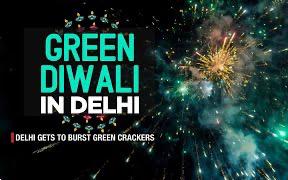Despite Supreme Court restrictions and the promotion of “green” firecrackers, Delhi recorded its worst post-Diwali air quality in five years. PM2.5 levels soared to hazardous highs, revealing the ineffectiveness of current policies and the urgent need for civic responsibility and enforceable pollution control during festive celebrations.
Bursting the Green Myth: Delhi’s Diwali Pollution Hits Alarming Highs Despite Firecracker Restrictions
Diwali 2025 in Delhi has once again illuminated a grim reality—“green” firecrackers are not the solution many hoped for. Despite Supreme Court-imposed restrictions and efforts to balance tradition with environmental concerns, the capital’s air quality plummeted to dangerous levels, exposing the limitations of policy enforcement and public compliance.
Key Highlights from the Diwali Pollution Fallout:
Record-Breaking PM2.5 Levels
Delhi’s hourly PM2.5 levels on Diwali night averaged 786 micrograms per cubic metre, the highest since 2021, and over 30 times India’s safe limit.
The worst single reading reached 675 micrograms per cubic metre, triggering health alerts and visibility issues.
Green Crackers: Less Harmful, Not Harmless
“Green” firecrackers, designed to emit fewer pollutants, still contribute significantly to air toxicity.
Experts and media reports clarified that these crackers are not non-polluting, and their widespread use failed to prevent the annual smog spike.
Supreme Court’s Limited Intervention
The apex court permitted the sale and bursting of certified green crackers only between October 20–21, with strict time windows.
However, enforcement proved nearly impossible across Delhi-NCR’s 20+ million residents, with violations rampant.
Stubble Burning Not the Culprit This Time
Surprisingly, stubble burning dropped by 77.5%, yet pollution levels still soared, confirming that firecrackers were the primary trigger this year.
Civic Responsibility Under Scrutiny
Editorials emphasized that firecrackers are one of the few avoidable pollution sources, urging citizens to rethink festive practices.
Choosing not to burst crackers is seen as a direct form of environmental accountability.
Policy vs. Practice Gap
The Diwali aftermath highlights a disconnect between judicial intent and ground-level execution, calling for better monitoring, public awareness, and alternative celebration models.
Delhi’s Diwali celebration may have lit up homes, but it also darkened the skies, reminding us that true festivity must include environmental mindfulness.
Sources: MSN News, MSN India, Hindustan Times

